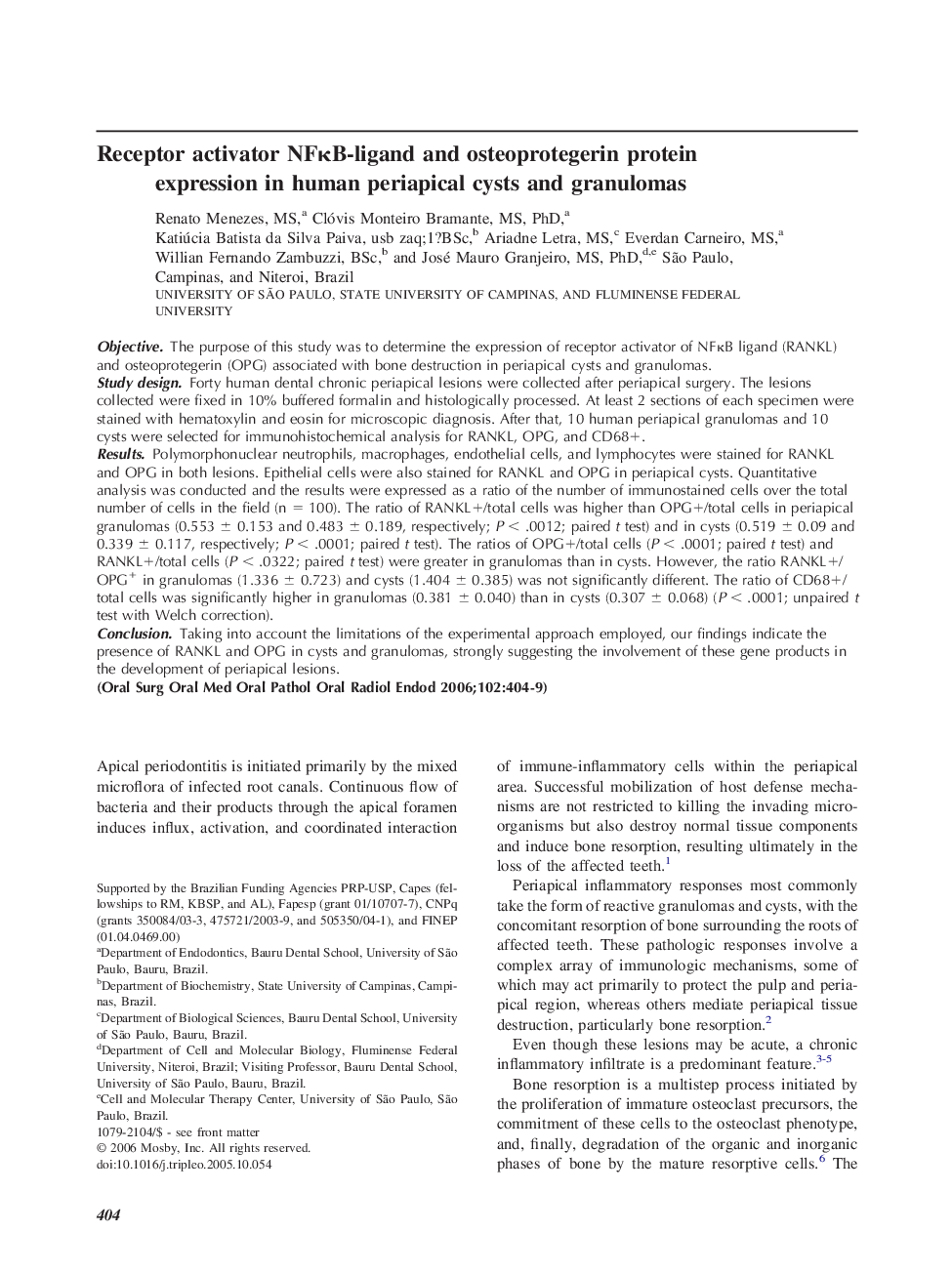| Article ID | Journal | Published Year | Pages | File Type |
|---|---|---|---|---|
| 3169931 | Oral Surgery, Oral Medicine, Oral Pathology, Oral Radiology, and Endodontology | 2006 | 6 Pages |
ObjectiveThe purpose of this study was to determine the expression of receptor activator of NFκB ligand (RANKL) and osteoprotegerin (OPG) associated with bone destruction in periapical cysts and granulomas.Study designForty human dental chronic periapical lesions were collected after periapical surgery. The lesions collected were fixed in 10% buffered formalin and histologically processed. At least 2 sections of each specimen were stained with hematoxylin and eosin for microscopic diagnosis. After that, 10 human periapical granulomas and 10 cysts were selected for immunohistochemical analysis for RANKL, OPG, and CD68+.ResultsPolymorphonuclear neutrophils, macrophages, endothelial cells, and lymphocytes were stained for RANKL and OPG in both lesions. Epithelial cells were also stained for RANKL and OPG in periapical cysts. Quantitative analysis was conducted and the results were expressed as a ratio of the number of immunostained cells over the total number of cells in the field (n = 100). The ratio of RANKL+/total cells was higher than OPG+/total cells in periapical granulomas (0.553 ± 0.153 and 0.483 ± 0.189, respectively; P < .0012; paired t test) and in cysts (0.519 ± 0.09 and 0.339 ± 0.117, respectively; P < .0001; paired t test). The ratios of OPG+/total cells (P < .0001; paired t test) and RANKL+/total cells (P < .0322; paired t test) were greater in granulomas than in cysts. However, the ratio RANKL+/OPG+ in granulomas (1.336 ± 0.723) and cysts (1.404 ± 0.385) was not significantly different. The ratio of CD68+/total cells was significantly higher in granulomas (0.381 ± 0.040) than in cysts (0.307 ± 0.068) (P < .0001; unpaired t test with Welch correction).ConclusionTaking into account the limitations of the experimental approach employed, our findings indicate the presence of RANKL and OPG in cysts and granulomas, strongly suggesting the involvement of these gene products in the development of periapical lesions.
